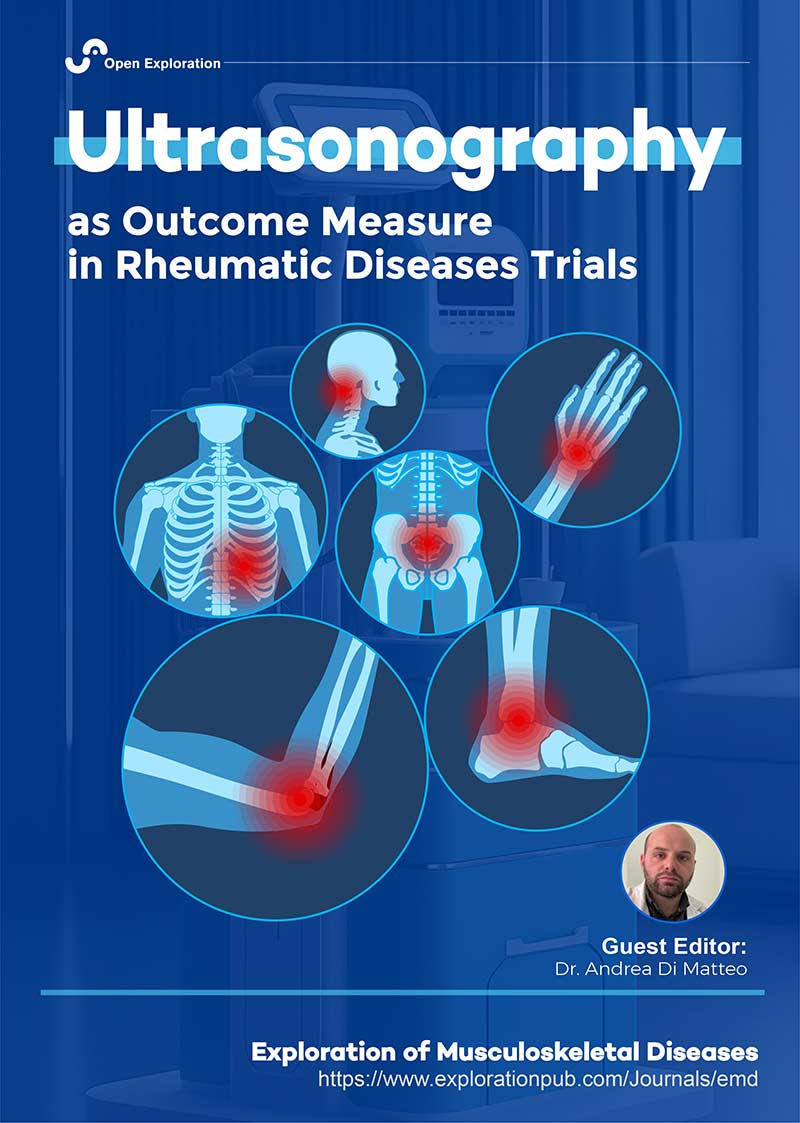
Ultrasound as Outcome Measure in Rheumatic Diseases Trials
Guest Editor
Dr. Andrea Di Matteo E-Mail
University of Leeds, Leeds, United Kingdom
About the Special lssue
In the intricate landscape of rheumatic diseases, the pursuit of precise and objective outcome measures in clinical trials is imperative. Traditionally, subjective assessments have posed challenges, impeding accurate evaluation of treatment efficacy and disease progression.
The advent of more sensitive imaging tools, such as ultrasound, has improved these assessments and provided new insights into rheumatic conditions' pathophysiology and clinical research.
By evaluating synovial inflammation, detecting power Doppler signals, and delineating erosive changes, ultrasound offers invaluable insights into disease activity and treatment response among patients with inflammatory arthritis, thereby enhancing the standards of clinical trial endpoints. Moreover, numerous studies have shown the value of ultrasound in the assessment of extra-articular involvement in rheumatic diseases, encompassing areas such as salivary glands, lungs, vessels, muscles, and skin, rendering it a promising tool for patients with connective tissue diseases.
Furthermore, collaborative initiatives led by international organizations such as the Outcome Measures in Rheumatology (OMERACT) ultrasound working group have fostered a harmonized approach to standardization and protocol development. These efforts lay the groundwork for robust research methodologies, enhancing data comparability and facilitating evidence synthesis across studies.
Through various scholarly contributions-original research, comprehensive reviews, and viewpoints- aims to exploration into ultrasound's pivotal role as an outcome measure in rheumatic diseases.
Keywords: Ultrasound, rheumatoid arthritis, RMDs, imaging, diagnosis, clinical trials, outcome measures